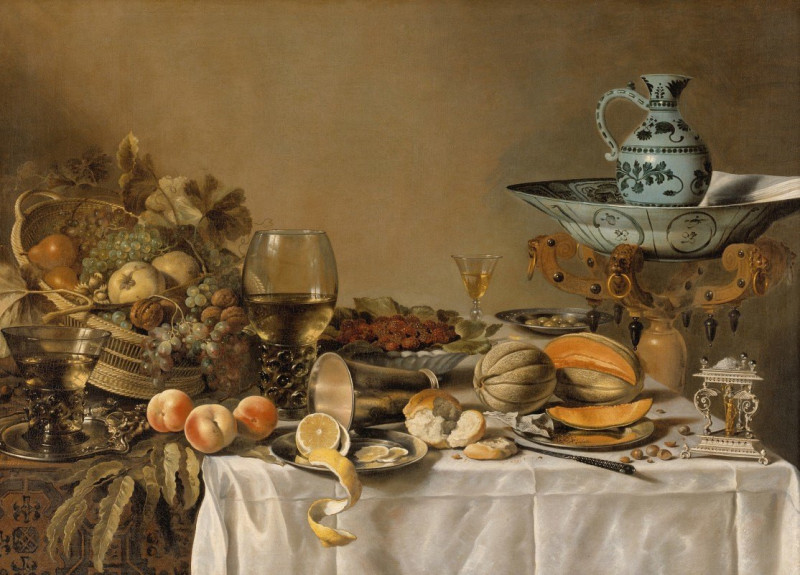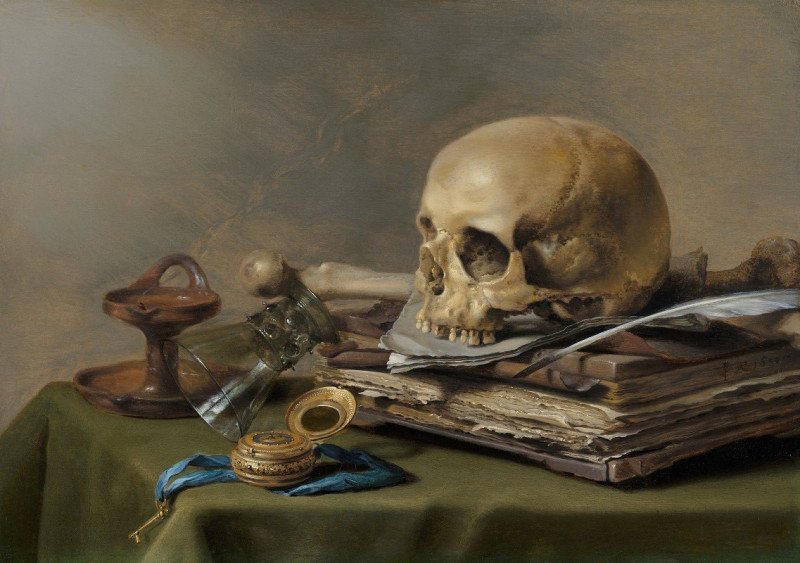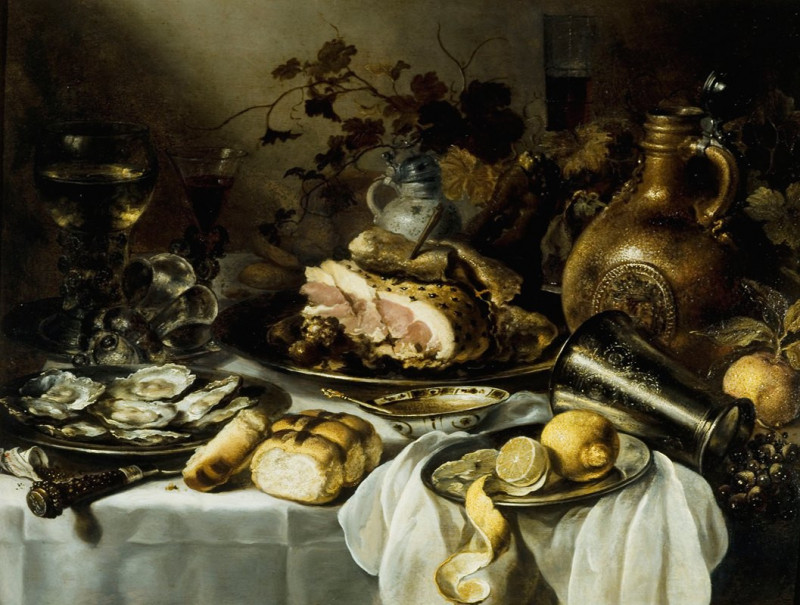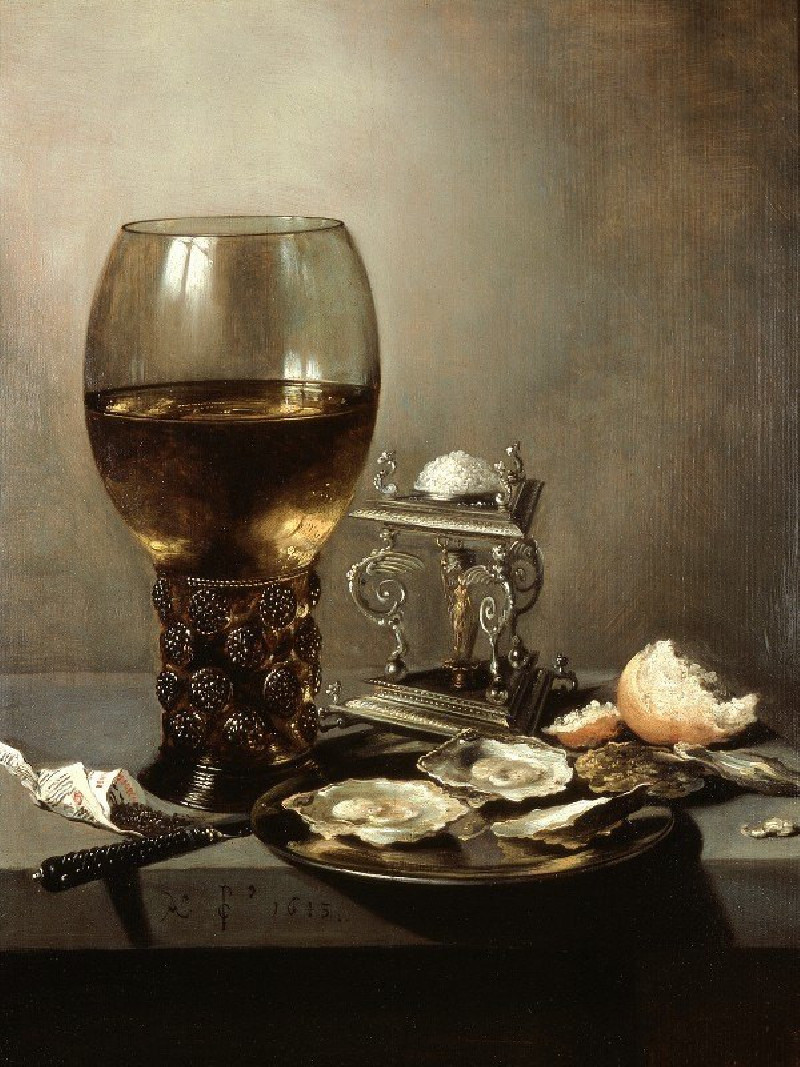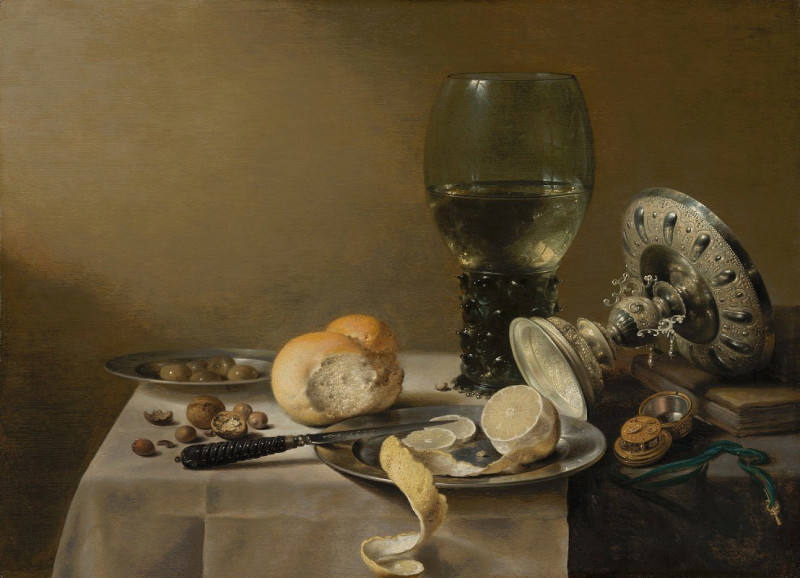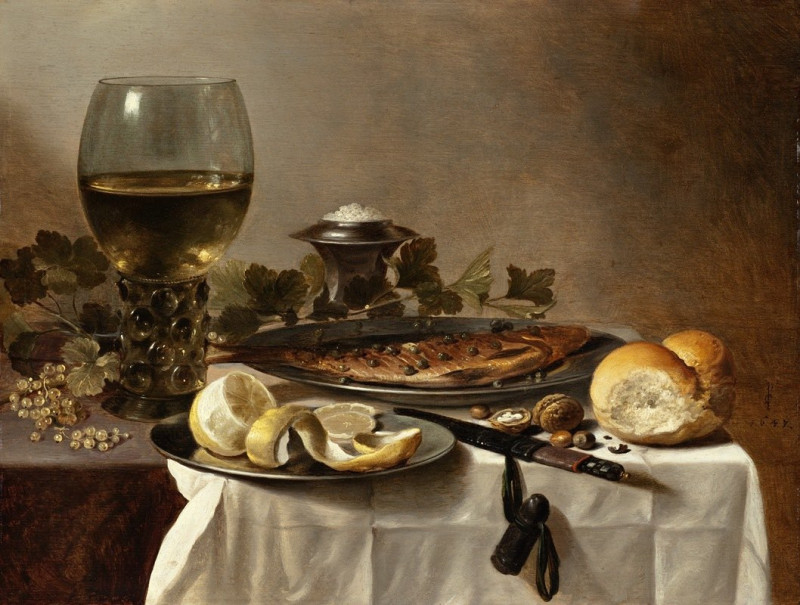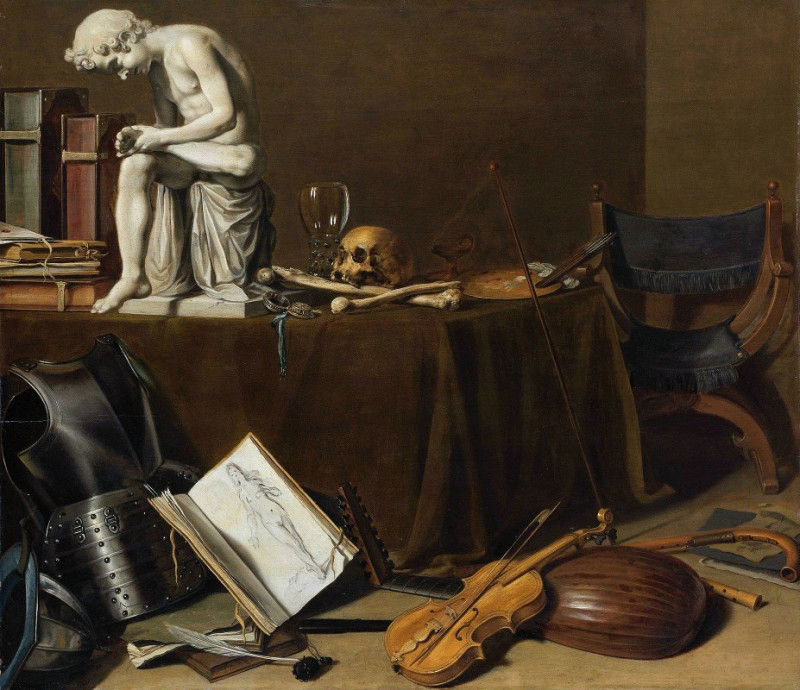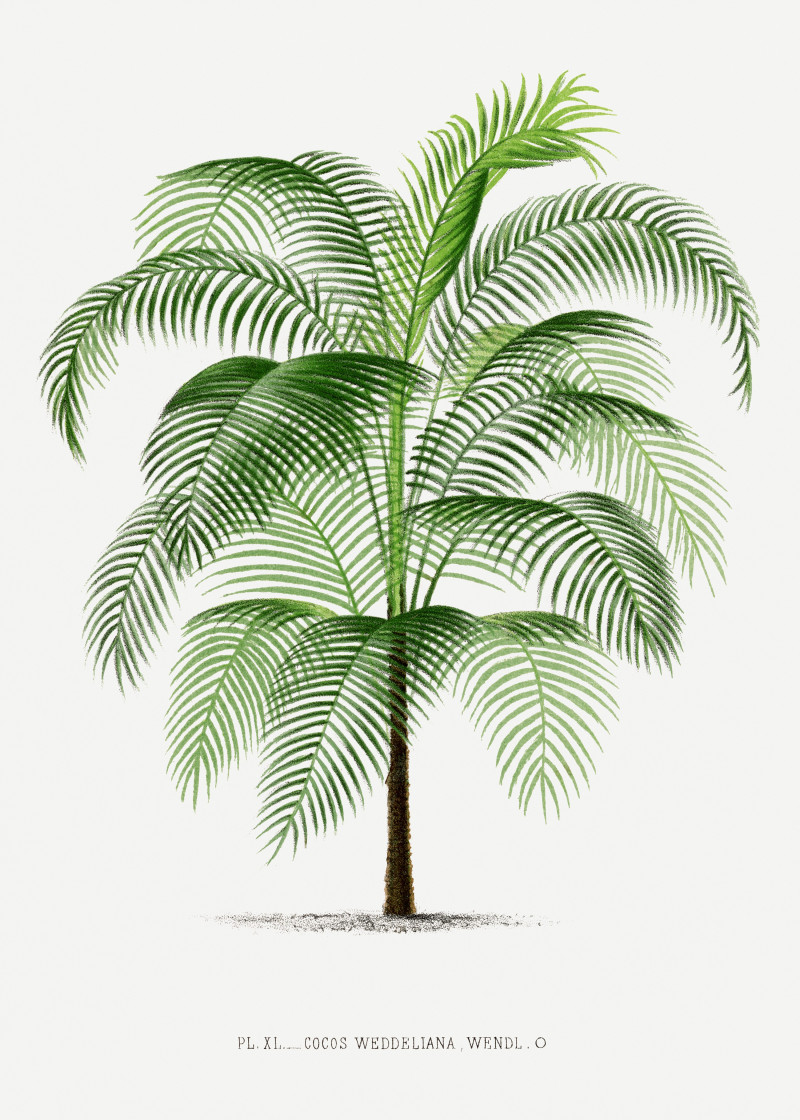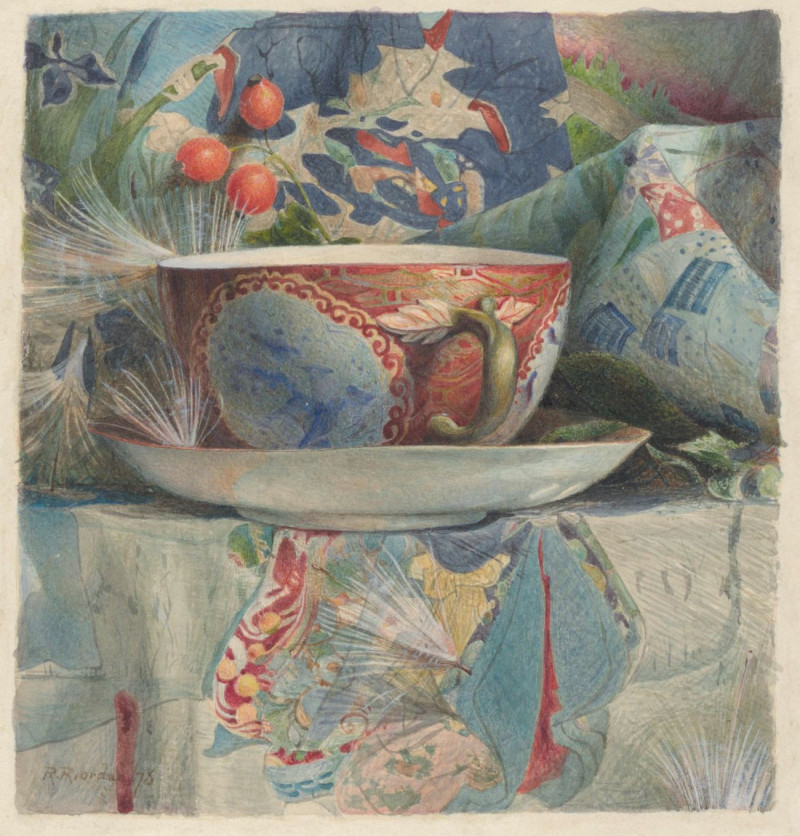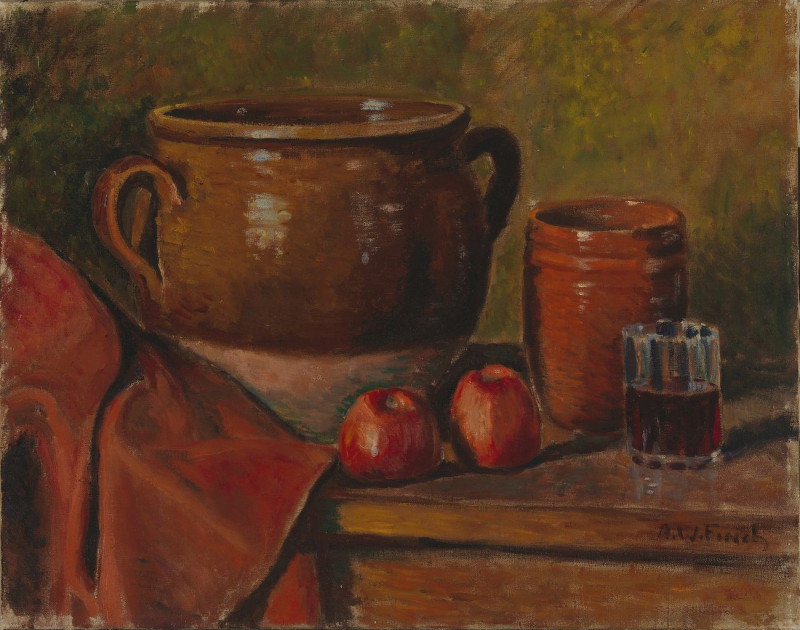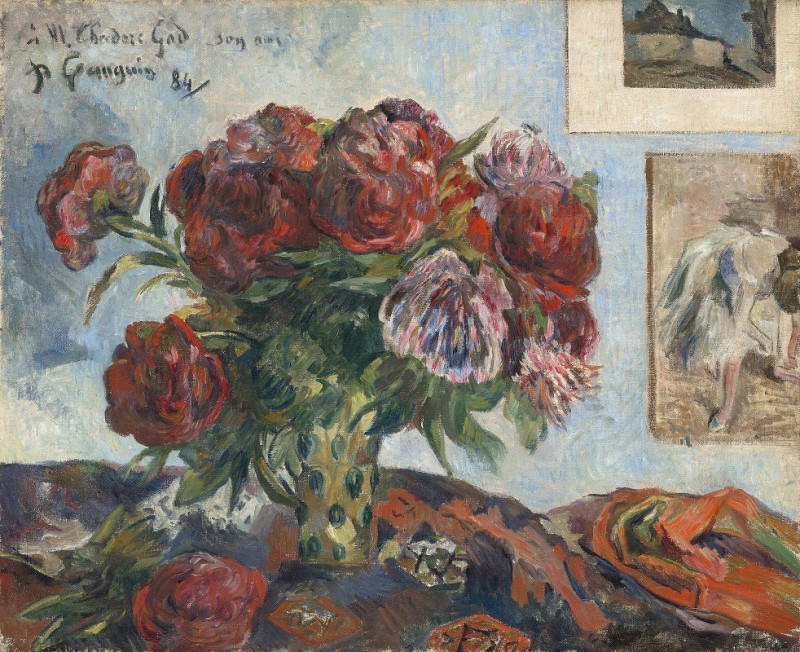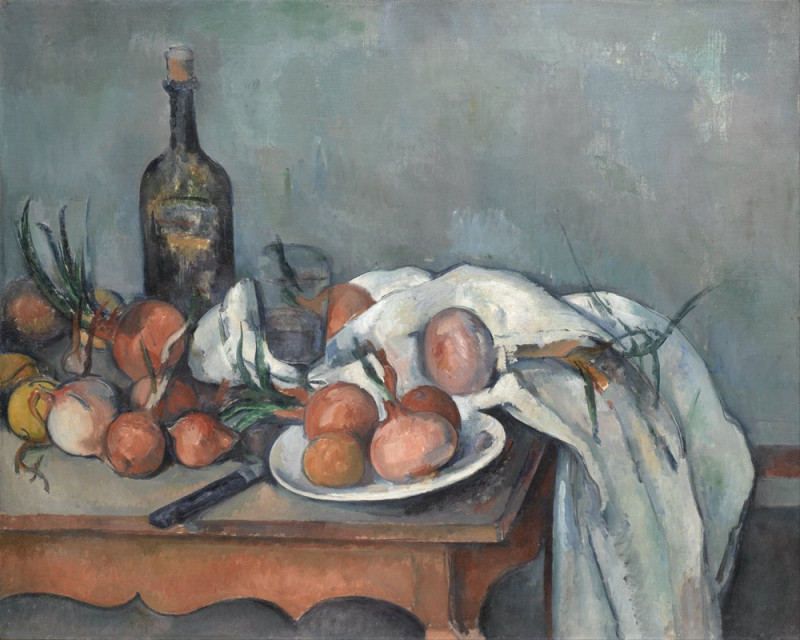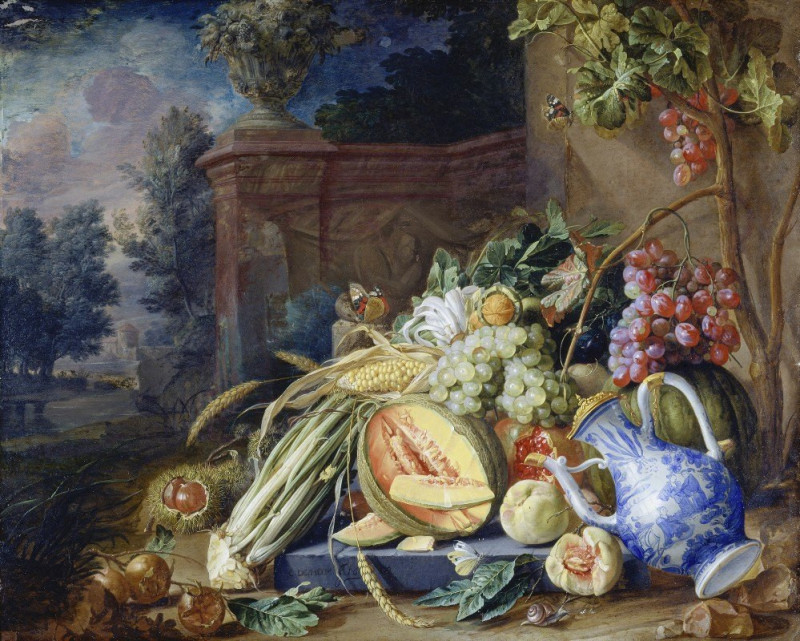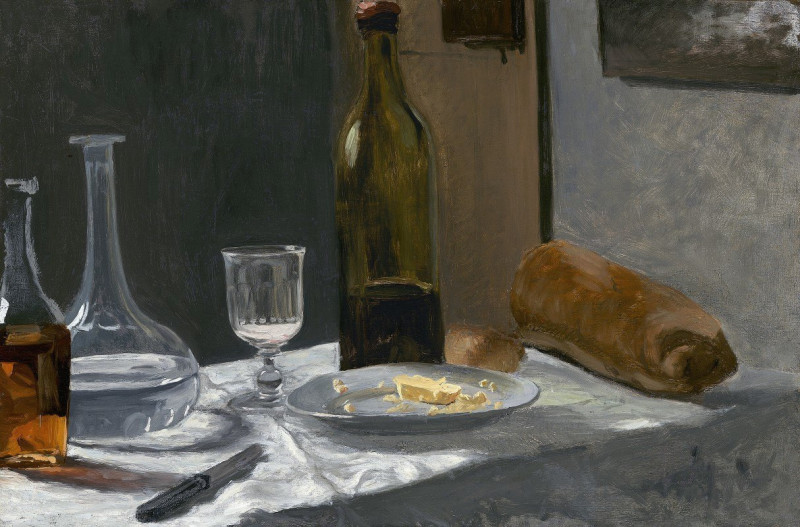Still Life (1640 – 1649)
Technique: Giclée quality print
Recommended by our customers
More about this artwork
We are delighted to present "Still Life" (1640-1649) by Pieter Claesz, an exemplary work that showcases the artist's expertise in the still life genre that flourished during the Dutch Golden Age. The painting captivates viewers with its detailed and realistic depiction of a table elegantly laid out with a variety of objects symbolizing wealth and abundance in 17th-century Netherlands.In this magnificent piece, Claesz displays an array of items including fruits like grapes, peaches, and a half-peeled lemon, which contribute to the lavish sense of texture throughout the composition. The scene is also adorned with a sumptuous collection of fine silverware, gleaming glassware filled with wine, and a strikingly detailed pewter jug, all resting on an ornately folded white tablecloth that drapes softly off the table's edge. Each object is meticulously rendered, from the reflective qualities of metal and glass to the translucent skin of grapes and the rough texture of bread.Claesz’s use of light subtly highlights the curvature and sheen of the silver and glass, enhancing the overall opulence of the setting. Furthermore, the strategic placement of these objects not only demonstrates Claesz's skill in composition but also may hint at themes of temporality and the fleeting nature of material pleasures.
Delivery
Returns
Pieter Claesz was a Dutch Golden Age painter of still lifes.
He was born in Berchem, Belgium, near Antwerp, where he became a member of the Guild of St. Luke in 1620. He moved to Haarlem in 1620, where his son, the landscape painter Nicolaes Pieterszoon Berchem was born (October 1). He and Willem Claeszoon Heda, who also worked in Haarlem, were the most important exponents of the "ontbijt" or dinner piece.

